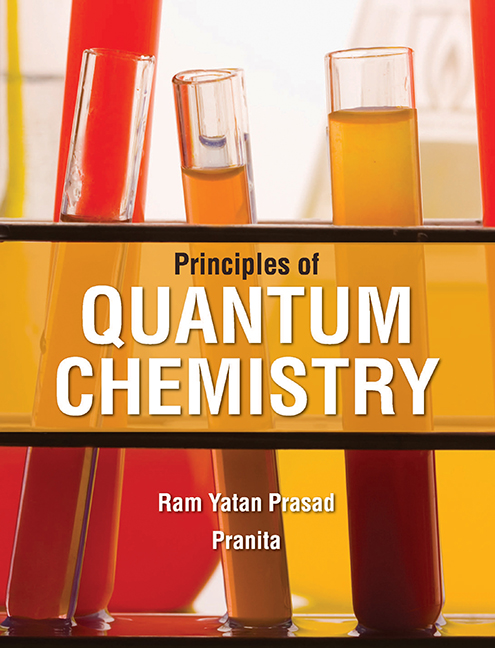Book contents
- Frontmatter
- Dedication
- Contents
- List of Figures
- List of Tables
- Foreword
- Preface
- 1 Quantum Theory
- 2 Wave–Particle Duality
- 3 Mathematical Techniques
- 4 Quantum Mechanical Operators
- 5 Postulates of Quantum Mechanics
- 6 The Schrödinger Equation
- 7 Playing with the Schrödinger Equation
- 8 Hydrogen Atom
- 9 Approximate Methods
- 10 Diatomic Molecules
- 11 Multi-electronic Systems
- 12 Polyatomic Molecules
- 13 Hückel Molecular Orbital Theory/Method
- 14 Density Functional Theory
- Glossary
- Appendix I
- Appendix II
- Appendix III
- Model Question Papers
- Index
11 - Multi-electronic Systems
Published online by Cambridge University Press: 02 December 2022
- Frontmatter
- Dedication
- Contents
- List of Figures
- List of Tables
- Foreword
- Preface
- 1 Quantum Theory
- 2 Wave–Particle Duality
- 3 Mathematical Techniques
- 4 Quantum Mechanical Operators
- 5 Postulates of Quantum Mechanics
- 6 The Schrödinger Equation
- 7 Playing with the Schrödinger Equation
- 8 Hydrogen Atom
- 9 Approximate Methods
- 10 Diatomic Molecules
- 11 Multi-electronic Systems
- 12 Polyatomic Molecules
- 13 Hückel Molecular Orbital Theory/Method
- 14 Density Functional Theory
- Glossary
- Appendix I
- Appendix II
- Appendix III
- Model Question Papers
- Index
Summary
In Chapter 9, we computed the solutions of the Schröodinger equation for one- and twoelectron systems, which are approximate solutions, but the exact solutions of these and multi-electronic system are difficult to obtain. It should be kept in mind that the difficulties are only computational. There is no doubt that various methods have been developed to solve the Schröodinger equation but they are approximate in nature. Here, we shall take into consideration, in essence, one of them, namely, the method of selfconsistent field (SCF), which is more commonly called the Hartree−Fock SCF Method. The rigorous approach for getting the Hartree−Fock equations for multi-electronic systems is based on the variational principle. Our main purpose here is to estimate the energy of the many electron system by considering the interaction of all the electrons with the nucleus and the interaction of all the electrons with each other.
Energy of the many electron system
First of all, we shall know about the SCF. Actually, SCF is a concept used to obtain approximate solutions to multi-electronic system in quantum mechanics. The procedure begins with an approximate solution for a particle moving in a single particle potential, which is derived from its average interaction with all other particles. This average interaction is obtained by the wave functions for all other particles. The equation, which describes this average interaction is solved and the better solution or improved solution obtained is employed in the calculation of the interaction term. This process is repeated/iterated for the wave function until the wave function and the related energies are not significantly changed in the cycle, self-consistency having been reached.
We want to put forward only the physical meaning of SCF. The spatial distribution of the electrons in an atom alters continuously, but in case of stationary state, the probability density becomes constant. Hence, every electron creates some field, which is supposed to be constant. Then, the motion of every electron can be considered to be independent in the average field of the nucleus and of all other electrons or in other words we can say that each electron possesses its wave function and its set of quantum numbers.
- Type
- Chapter
- Information
- Principles of Quantum Chemistry , pp. 497 - 580Publisher: Foundation BooksPrint publication year: 2014



